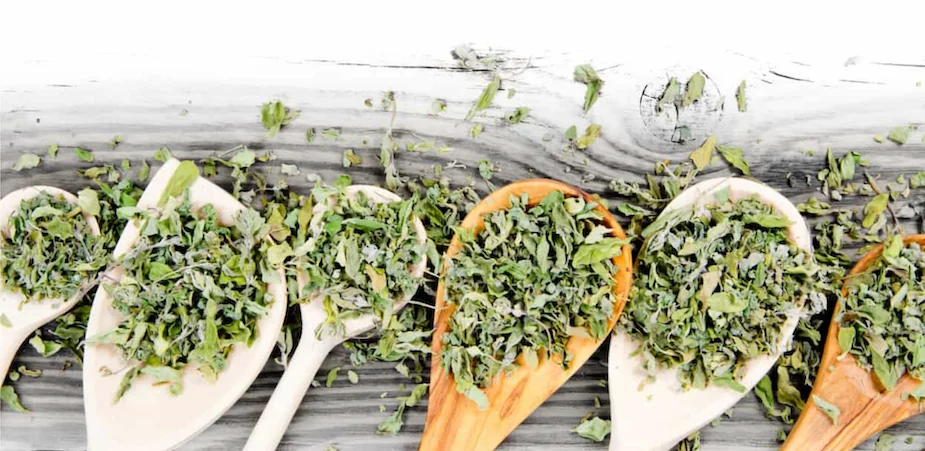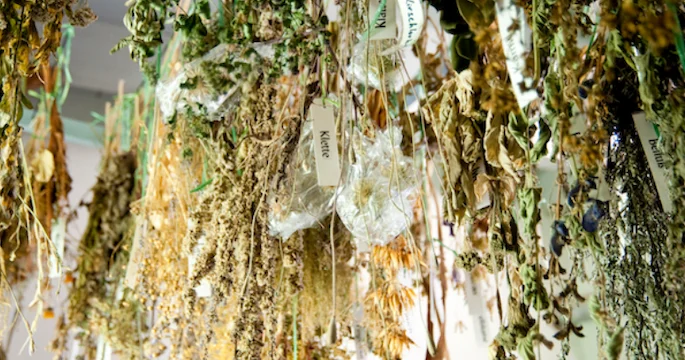What We Mean by “Dehydrate”
Here at Easy Food Dehydrating, “dehydrate” always means using an electric food dehydrator — the easy, reliable way to dry food at home.
- Home
- What Are Food Dehydrators
- 5 Best Food Dehydrators for Drying Herbs at Home
5 Best Food Dehydrators for
Drying Herbs at Home

Drying herbs at home is one of the simplest ways to preserve fresh flavors for year-round use. But choosing the right dehydrator makes all the difference—some models excel at gentle, even drying while others shine for batch size or budget-friendliness.
✅ Quick Answer: What are the 5 best food dehydrators for drying herbs at home?
The top picks are the Nesco FD-1018A Gardenmaster Pro, Excalibur 3926TB, Presto 06300 Dehydro, NutriChef PKFD06, and Hamilton Beach 32100A. These models balance gentle drying temperatures, efficient air circulation, and user-friendly features—perfect for preserving herbs with flavor and potency.
In this guide, I’ll walk you through the 5 best food dehydrators for drying herbs at home, including their standout features, practical tips, and why each one may be the right fit for your kitchen.

5 Best Food Dehydrators for Herbs (Which One Should You Pick?)
The Nesco FD-1018A is my top pick due to its ease of use and reliable performance. I’ve personally used this model since 2010!
Key Features:
- Temperature range: 90°F–155°F with precise control.
- Comes with 8 trays, expandable up to 12.
- Circular design with a top-mounted fan for even air circulation.
Pro Tip: Avoid overloading with too many trays to ensure uniform drying. Rotate trays for consistent results.
The Excalibur 3926TB offers exceptional drying capacity with its 9 stackable trays, making it ideal for larger batches of herbs.
Key Features:
- Temperature range: 105°F–165°F.
- Rear-mounted fan eliminates the need for tray rotation (though I still recommend it).
- Adjustable timer with a 26-hour shutoff for unattended drying.
Bonus Use: Did you know this model can also proof bread? Add a shallow pan of water beneath one tray and set the dehydrator to its lowest temperature.
Compact and affordable, the Presto 06300 is a great choice for beginners.
Key Features:
- Temperature range: 90°F–165°F.
- Comes with 4 trays, expandable up to 8.
- Top-mounted fan and nestable trays for easy storage.
This NutriChef model is simple to operate and features a unique square design.
Key Features:
- Five see-through trays for easy monitoring.
- One-dial control with low, medium, and high settings.
- Maximum temperature: 180°F.
What I Love: The see-through trays are a great reminder to check the drying process and avoid accidentally leaving food inside.
The Hamilton Beach 32100A is practical and user-friendly, featuring an automatic shutoff and digital controls.
Key Features:
- Five trays, expandable up to 12.
- Temperature range: 100°F–160°F.
- Transparent lid for quick visual checks.
Pro Tip: Use the 48-hour timer for foods that require extended drying times.
As an Amazon Associate, I earn commission from qualifying purchases. The price you pay does not increase. Read disclosure here.
Herb Drying Tips: Get the Best Results Every Time
Drying herbs (and other foods) using a dehydrator offers several benefits: no need for refrigeration, better preservation of flavors, and the ability to make small or large batches based on your needs.
Here are some quick tips for getting the best results
- Use a Digital Timer and Thermostat: Digital controls allow for precise temperature settings, ensuring your herbs dry at the right level.
- Dry in Small Batches: Smaller quantities reduce drying time and ensure consistent results.
- Rotate Trays for Even Drying: Despite manufacturers’ claims, it’s best to rotate trays, especially with top or rear-mounted fans.
- Choose Solid Sheets for Small Herbs: Fine herbs like thyme can fall through mesh trays. Use solid sheets to prevent this.
- Keep the Dehydrator in a Well-Ventilated Space: Avoid placing it under cabinets where moisture can accumulate.
Must-Have Features in a Herb Dehydrator
When choosing a food dehydrator, consider these essential features:
- Temperature Range: A wide range (90°F–165°F) is ideal for different herbs.
- Tray Capacity: Select a model with expandable trays if you plan to dry large quantities.
- Fan Placement: Fans can be top-mounted, bottom-mounted, or rear-mounted. Each type has its pros and cons.
- Ease of Cleaning: Choose models with easily removable trays and fans that are shielded from food debris.
- Size and Storage: Compact designs or stackable trays save valuable kitchen space.
How to Store Dried Herbs for Maximum Freshness
For best results, store dried herbs in half-pint Mason jars or airtight containers. Keep them in a cool, dark place to preserve their flavor and potency.
Running out of storage space? Consider creating a DIY storage wall or use vacuum-sealed bags to save room.
Dehydrator vs. Air-Drying: Which Works Faster for Herbs?

Yes, using a dehydrator is much faster than air drying herbs. The circulating warm air in a dehydrator speeds up the process and keeps the herbs clean from dust or contaminants.
Reminder: Monitor the temperature carefully—herbs need gentle drying, not cooking.
Grow & Dehydrate Your Own Herbs (Free Guide Inside)
Ready to take your herb-drying skills to the next level?
Download my free eBook, "How to Grow and Dehydrate Herbs," for step-by-step guidance on growing, drying, and preserving your herbs.
Final Thoughts: Choosing the Best Herb Dehydrator
Whether you’re a home chef or a gardening enthusiast, the right dehydrator can make all the difference in preserving your herbs. The models reviewed here provide excellent options for all needs and budgets.
With these tips, you’ll be on your way to enjoying flavorful, homemade dried herbs in no time!
Herb Dehydrator FAQs: Answers Before You Buy
What temperature should I use to dehydrate herbs?
What temperature should I use to dehydrate herbs?
Most herbs dry best between 95°F and 115°F. Low, gentle heat preserves essential oils and flavor.
How long does it take to dehydrate herbs?
How long does it take to dehydrate herbs?
Depending on the herb and humidity, it usually takes 1–4 hours in a dehydrator. Thicker herbs like rosemary take longer than delicate herbs like basil.
Do I need special trays for herbs?
Do I need special trays for herbs?
Yes - fine mesh or solid sheets prevent small herbs like thyme or dill from falling through. Many dehydrators sell herb-specific tray inserts.
Can I dehydrate herbs along with fruits or veggies?
Can I dehydrate herbs along with fruits or veggies?
It’s best to dehydrate herbs separately since they require lower temperatures and can absorb strong odors from other foods.
Choosing the right dehydrator means you’ll enjoy flavorful herbs ready for soups, sauces, teas, and more—without losing their natural aroma.
Once you’ve picked your perfect machine, why not put it to the test with my free 5 Dried Food Recipes You’ll Actually Love PDF? Inside, you’ll find favorites like carrot soup, minestrone, split pea soup, spicy beef jerky, and even banana cinnamon rolls. Grab your copy below and start drying with confidence!
Get 5 Dried Food Recipes You'll Actually Love
Here's where you can get your copy of our all new
5 Dried Food Recipes (That Actually Taste Great)
They're my all-time favorite easy dried food meals!
Get it here right now.
For Free!
Before You Go...
If you enjoyed this page, tap the ❤️ in the lower right-hand corner.
It saves this page to your Grow bookmarks so you can find it again later.
You’ll also see quick share buttons to copy the link, post to Facebook,
or save it straight to Pinterest.






















